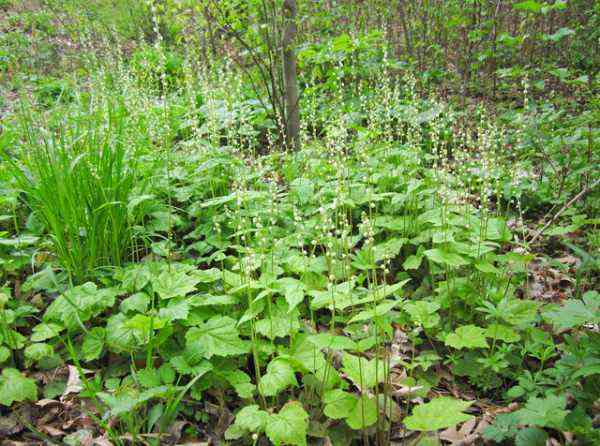Your cart is currently empty!
How To Plant And Care For Canna Lilies
Discover the vibrant beauty of Canna Lily flowers with easy care tips for this stunning perennial plant in your garden.
Your cart is currently empty!
Photo:
Cbaile19, CC0, via Wikimedia Commons
The Miterwort, Mitella diphylla, is the jewel of the spring shade garden. Plant close enough to a path that the small flowers can be enjoyed up close. Welcome mitewort to shady gardens, cottage gardens, woodland gardens, and naturalized areas.
This plant has a 20 to 45 cm long hairy stem. It bears two opposite leaves near the middle of the stem. There are other leaves, with long stalks, near the base of the plant. Its tiny flowers are only 3 or 4 mm across. Miterwort petals are delicately fringed and arranged in a long, terminal cluster. The fruit is a mitre-shaped capsule, giving the plant its name. It contains black seeds.
Botanical Name: Mitella diphylla
Also Called: Bishop’s Cap, Twoleaf miterwort
En français: Mitrelle à deux feuilles
Colour:
Blooms:
Sun / Shade:
Soil:
Height:
In nature, you’ll find it in deciduous woods and borders.

Discover the vibrant beauty of Canna Lily flowers with easy care tips for this stunning perennial plant in your garden.
Discover how to get desert cacti to bloom with the right environment and care. Get tips for providing the perfect environment for desert and holiday cacti, so you’ll be enjoying blossoms all year long. Check out this article to learn how to keep temperatures cool and light intensity high to stimulate blooming.
Chokeberry produces fantastic fruit, and it is easy to grow. It is an ornamental beauty with beautiful colours throughout the seasons.
Gardening is a multisensory experience. When you walk into a garden, discover and experience scented pleasures. All senses can be stimulated in the garden.
Fuchsia plant care can be done by anyone. They can be pruned and shaped into beautiful hanging baskets with a wide array of colours.
Add Some Winter Protection & Variety to Your Garden: Try Microgreens! Make the most of your plants this winter. Try out the cool and unique flavor of microgreens. Check out this article to learn how to protect your plants with snow, add variety to your garden with seed catalogs, and cultivate microgreens to spice up your breakfast.
GardeningCalendar.ca gets some funding from advertisers. If you click on links and advertisements at no cost to you, the site may receive a small commission that helps fund its operation.
© 2025 J&S Calendars Ltd.
Leave a Reply
You must be logged in to post a comment.